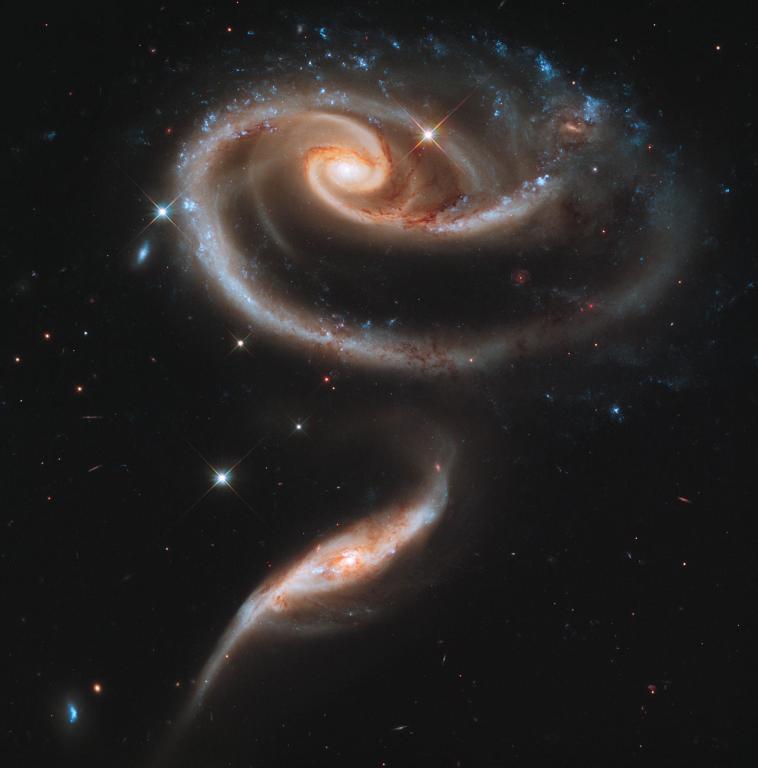
This image of a pair of interacting galaxies called Arp 273 was released to celebrate the 21st anniversary of the launch of the NASA/ESA Hubble Space Telescope. The distorted shape of the larger of the two galaxies shows signs of tidal interactions with the smaller of the two. It is thought that the smaller galaxy has actually passed through the larger one.
(NASA, ESA and the Hubble Heritage Team [STScI/AURA])
Fairly raw notes from a manuscript:
Physicist Karl W. Giberson:
you can explain the marvelous design of our universe by the finesse of a wise creator or the firepower of some mindless cosmic machine extravagantly belching out alternative realities, some of which have the ingenious design of this one, but most of which do not—collateral damage on a cosmic scale.[1]
Physicist Karl W. Giberson:
One might suspect that such unprecedented speculation had emerged from some unusual observation. Maybe planets are disappearing; or space ships that venture beyond the asteroid belt mysteriously lose contact with NASA. Perhaps new stars are popping into existence from nowhere. But such is not the case. This new cosmology is not based on observation of what appear to be intrusions from other universes. But it is based on new findings of another kind. The many universes on offer today are invoked in a way to explain this universe—in particular, to explain its improbable hospitality to human life.[2]
There seems to be no particular reason why the various features of the universe as we know it—the laws and constants and magnitudes that have been identified—must necessarily be the way they actually are. We can explain them either by the finesse of a subtly brilliant mind exercising staggering power or, alternatively, by sheer (but unintelligent) firepower—by not merely a handful of alternative universes, nor even by a few hundred, but by an infinity of them, each of them filled with real matter, each of them functioning according to its own peculiar laws.
If there are an infinite number of differing universes, it’s no wonder that one of them happens to look and feel and act like ours and, like ours, to be suited for the emergence of life. It’s surely nothing remarkable that we happen to live in a universe that’s compatible with our survival. Given enough universes, one or two or even many of them may appear to have been “designed.” But that appearance will be pure illusion, because, in fact, it has arisen by mere exuberant chance. If, on the other hand, only one universe exists, and it happens to be this one, it certainly seems arguable that it manifests indicators of design. Or, if you will, of finesse.
How are we to distinguish between these two conflicting explanations? It seems virtually impossible to imagine a definitive scientific test that would enable us to do so. We are, after all. talking about separate and distinct universes.
[1] Giberson, “The Goldilocks Universe,” 30.
[2] Giberson, “The Goldilocks Universe,” 30.
Posted from Lethbridge, Alberta, Canada










